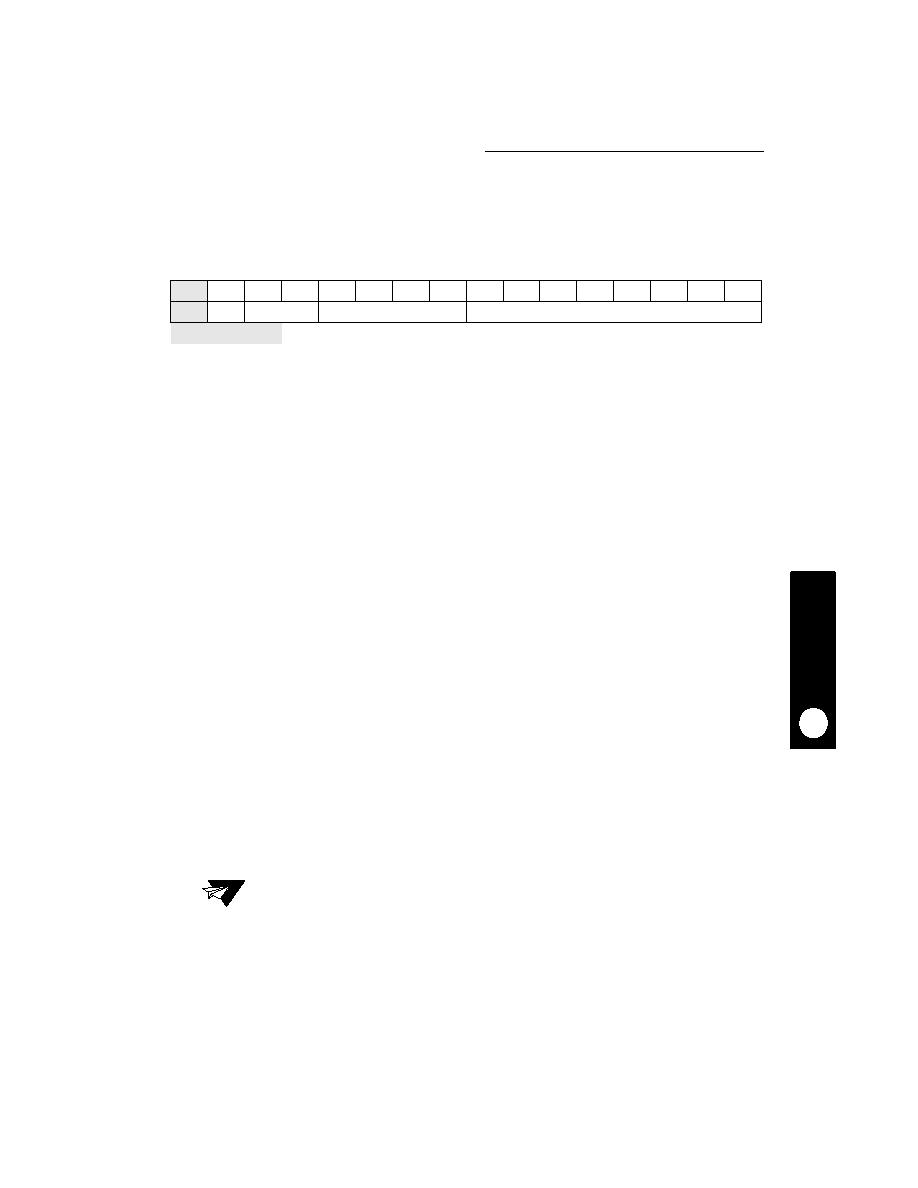- 您現(xiàn)在的位置:買(mǎi)賣(mài)IC網(wǎng) > PDF目錄69025 > MC68328PV (MOTOROLA INC) MICROCONTROLLER, PQFP144 PDF資料下載
參數(shù)資料
| 型號(hào): | MC68328PV |
| 廠商: | MOTOROLA INC |
| 元件分類: | 微控制器/微處理器 |
| 英文描述: | MICROCONTROLLER, PQFP144 |
| 封裝: | PLASTIC, TQFP-144 |
| 文件頁(yè)數(shù): | 71/198頁(yè) |
| 文件大小: | 551K |
| 代理商: | MC68328PV |
第1頁(yè)第2頁(yè)第3頁(yè)第4頁(yè)第5頁(yè)第6頁(yè)第7頁(yè)第8頁(yè)第9頁(yè)第10頁(yè)第11頁(yè)第12頁(yè)第13頁(yè)第14頁(yè)第15頁(yè)第16頁(yè)第17頁(yè)第18頁(yè)第19頁(yè)第20頁(yè)第21頁(yè)第22頁(yè)第23頁(yè)第24頁(yè)第25頁(yè)第26頁(yè)第27頁(yè)第28頁(yè)第29頁(yè)第30頁(yè)第31頁(yè)第32頁(yè)第33頁(yè)第34頁(yè)第35頁(yè)第36頁(yè)第37頁(yè)第38頁(yè)第39頁(yè)第40頁(yè)第41頁(yè)第42頁(yè)第43頁(yè)第44頁(yè)第45頁(yè)第46頁(yè)第47頁(yè)第48頁(yè)第49頁(yè)第50頁(yè)第51頁(yè)第52頁(yè)第53頁(yè)第54頁(yè)第55頁(yè)第56頁(yè)第57頁(yè)第58頁(yè)第59頁(yè)第60頁(yè)第61頁(yè)第62頁(yè)第63頁(yè)第64頁(yè)第65頁(yè)第66頁(yè)第67頁(yè)第68頁(yè)第69頁(yè)第70頁(yè)當(dāng)前第71頁(yè)第72頁(yè)第73頁(yè)第74頁(yè)第75頁(yè)第76頁(yè)第77頁(yè)第78頁(yè)第79頁(yè)第80頁(yè)第81頁(yè)第82頁(yè)第83頁(yè)第84頁(yè)第85頁(yè)第86頁(yè)第87頁(yè)第88頁(yè)第89頁(yè)第90頁(yè)第91頁(yè)第92頁(yè)第93頁(yè)第94頁(yè)第95頁(yè)第96頁(yè)第97頁(yè)第98頁(yè)第99頁(yè)第100頁(yè)第101頁(yè)第102頁(yè)第103頁(yè)第104頁(yè)第105頁(yè)第106頁(yè)第107頁(yè)第108頁(yè)第109頁(yè)第110頁(yè)第111頁(yè)第112頁(yè)第113頁(yè)第114頁(yè)第115頁(yè)第116頁(yè)第117頁(yè)第118頁(yè)第119頁(yè)第120頁(yè)第121頁(yè)第122頁(yè)第123頁(yè)第124頁(yè)第125頁(yè)第126頁(yè)第127頁(yè)第128頁(yè)第129頁(yè)第130頁(yè)第131頁(yè)第132頁(yè)第133頁(yè)第134頁(yè)第135頁(yè)第136頁(yè)第137頁(yè)第138頁(yè)第139頁(yè)第140頁(yè)第141頁(yè)第142頁(yè)第143頁(yè)第144頁(yè)第145頁(yè)第146頁(yè)第147頁(yè)第148頁(yè)第149頁(yè)第150頁(yè)第151頁(yè)第152頁(yè)第153頁(yè)第154頁(yè)第155頁(yè)第156頁(yè)第157頁(yè)第158頁(yè)第159頁(yè)第160頁(yè)第161頁(yè)第162頁(yè)第163頁(yè)第164頁(yè)第165頁(yè)第166頁(yè)第167頁(yè)第168頁(yè)第169頁(yè)第170頁(yè)第171頁(yè)第172頁(yè)第173頁(yè)第174頁(yè)第175頁(yè)第176頁(yè)第177頁(yè)第178頁(yè)第179頁(yè)第180頁(yè)第181頁(yè)第182頁(yè)第183頁(yè)第184頁(yè)第185頁(yè)第186頁(yè)第187頁(yè)第188頁(yè)第189頁(yè)第190頁(yè)第191頁(yè)第192頁(yè)第193頁(yè)第194頁(yè)第195頁(yè)第196頁(yè)第197頁(yè)第198頁(yè)

Phase-Locked Loop and Power Control
MOTOROLA
MC68328 USER’S MANUAL 11/10/97
15-3
PHASE-LOCKED
LOOP
3
AND
POWER
CONTROL
PRELIMINARY
15.1.2 Frequency Select Register
This register (illustrated in Figure 3-3) controls the two dividers of the dual-modulus counter.
One additional bit assists the software to protect the PLL from accidental writes that change
the frequency. Another bit prepares for the VCO frequency change. While this register can
be accessed as bytes, it should always be written as a 16-bit word.
CLK32—Clock 32
This bit indicates the current status of the CLK32 signal and synchronizes the software to
the 32kHz reference clock when the VCO frequency is to be changed or the PLL is to be
disabled. Refer to Section Section 15.2 PLL Operation for details.
PROT—Protect Bit
This bit protects the “P” and “Q” counter values from additional writes. After this bit is set by
software, the frequency-select register cannot be written. Only a reset clears this bit.
QC—Q Count
These bits control the “Q” counter.
PC—P Count
These bits control the “P” counter.
15.2 PLL OPERATION
This section describes the operation and preferred sequences to control the PLL.
15.2.1 Initial Powerup
At initial powerup, the crystal oscillator begins oscillation within several hundred
milliseconds. While reset remains asserted, the PLL begins the lockup sequence and locks
within several milliseconds of the crystal oscillator startup. Once lockup occurs, the system
clock is available at the default master frequency of 16.580608 MHz (assuming a 32.768
kHz crystal). To generate the master frequency, multiply the reference (32.768 kHz) by the
PLL divisor. The default divisor is 506. The divisor can be changed under software control
and is outlined below.
15
14
13
12
11
10
9876543210
CLK32
PROT
UNUSED
QC
PC
Address: $(FF)FFF202
Reset Value: $0123
Note: The default divider value (506) was selected as it can directly generate standard
baud frequencies at accuracies of better than 0.05%.
相關(guān)PDF資料 |
PDF描述 |
|---|---|
| MC68330FE25 | 32-BIT, 25.16 MHz, MICROPROCESSOR, PQFP132 |
| MC68330FE8V | 32-BIT, 8.39 MHz, MICROPROCESSOR, PQFP132 |
| MC68330CFE8V | 32-BIT, 8.39 MHz, MICROPROCESSOR, PQFP132 |
| MC68330FE16 | 32-BIT, 16.78 MHz, MICROPROCESSOR, PQFP132 |
| MC68332ACFV25 | 32-BIT, 25 MHz, MICROCONTROLLER, PQFP144 |
相關(guān)代理商/技術(shù)參數(shù) |
參數(shù)描述 |
|---|---|
| MC68328UM | 制造商:MOTOROLA 制造商全稱:Motorola, Inc 功能描述:Integrated Portable System Processor-DragonBall |
| MC68330 | 制造商:FREESCALE 制造商全稱:Freescale Semiconductor, Inc 功能描述:Integrated CPU32 Processor |
| MC68330CFE16 | 制造商:FREESCALE 制造商全稱:Freescale Semiconductor, Inc 功能描述:Integrated CPU32 Processor |
| MC68330CFE8V | 制造商:FREESCALE 制造商全稱:Freescale Semiconductor, Inc 功能描述:Integrated CPU32 Processor |
| MC68330CFG16 | 制造商:FREESCALE 制造商全稱:Freescale Semiconductor, Inc 功能描述:Integrated CPU32 Processor |
發(fā)布緊急采購(gòu),3分鐘左右您將得到回復(fù)。